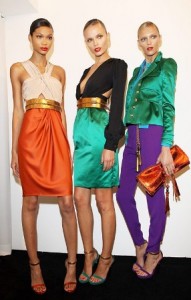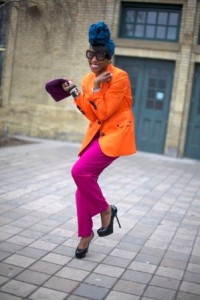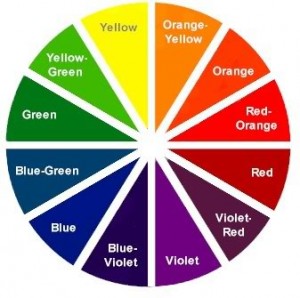 The art of color-blocking is a technique that has been around for quite some time. But like all things in fashion, this trend has resurfaced and is extremely popular this spring. Color-blocking is quite easy, not to mention it can be integrated into pretty much any look.
The art of color-blocking is a technique that has been around for quite some time. But like all things in fashion, this trend has resurfaced and is extremely popular this spring. Color-blocking is quite easy, not to mention it can be integrated into pretty much any look.
Now of course there are the high-end designers like Gucci, DVF and Fendi who have produced some amazing Spring-2011 collections that incorporate color-blocking, but what about us college students? Our budgets aren’t quite on that level –YET! (Speak it into existence, people.) Well, color-blocking can also be oh-so affordable. I frequent the thrift stores in my local area and buy tons of solid-color pieces, including blouses, belts and clutches – typically for $15 or less. I lean toward more vibrant colors like orange-yellow and blue-violet. If you’re anything like me and have many bright hues in your closet, color-blocking is an easy way of getting more bang for your buck.
Take a risk and combine colors that you may not immediately think to pair together. The easiest way to achieve this look is by using the color wheel, which provides us with a basic explanation of how colors evolve and which colors are complementary.
First we have our primary colors: red, yellow and blue. The mixture of primary colors into various combination creates secondary colors: green, purple and orange. If we keep mixing, our end result will be tertiary colors (orange-yellow, red-orange, violet-red, yellow-green & blue-green). There are also tints and shades: tints are mixed with white while shades are mixed with black.
Before class ends, here are some easy tips & techniques to keep in mind when color blocking:
 1. Analogous colors: any three colors lined up on the color wheel (e.g. violet, violet-red & red)
1. Analogous colors: any three colors lined up on the color wheel (e.g. violet, violet-red & red)
2. Complementary colors: any colors directly across from each other (e.g. blue & orange)
3. Pair colors that form 90 degree angles with each other (e.g. yellow & red -orange)
4. Pair colors that form an X (e.g. blue, orange, violet-red & yellow etc.)
5. Pair colors that form a T (e.g. yellow, blue-green & red-orange)
6. Color-families You can substitute pink (tint) with red and still be able to pull off the combos based on the color wheel.
Remember, color-blocking doesn’t only apply to your wardrobe; it can also be applied to make-up, interior design (dorm room décor) and pretty much any other palette you are working with.
So try it out, let me know how it worked out for you and send us some pics of you color blocking your life away!

